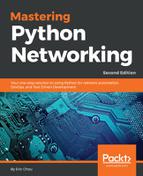In the early days of computer networking, protocols were proprietary and closely controlled by the company who designed the connection method. If you were using Novell's IPX/SPX protocol in your hosts, you would not able to communicate with Apple's AppleTalk hosts and vice versa. These proprietary protocol suites generally have analogous layers to the OSI reference model and follow the client-server communication method. They generally work great in Local Area Networks (LAN) that are closed, without the need to communicate with the outside world. When traffic does need to move beyond the local LAN, typically, an internet working device, such as a router, is used to translate from one protocol to another. An example would be a router connecting an AppleTalk network to an IP-based network. The translation is usually not perfect, but since most of the communication happens within the LAN in the early days, it is okay.
However, as the need for inter-network communication rises beyond the LAN, the need for standardizing the network protocol suites becomes greater. The proprietary protocols eventually gave way to the standardized protocol suites of TCP, UDP, and IP, which greatly enhanced the ability of one network to talk to another. The internet, the greatest network of them all, relies on these protocols to function properly. In the next few sections, we will take a look at each of the protocol suites.
